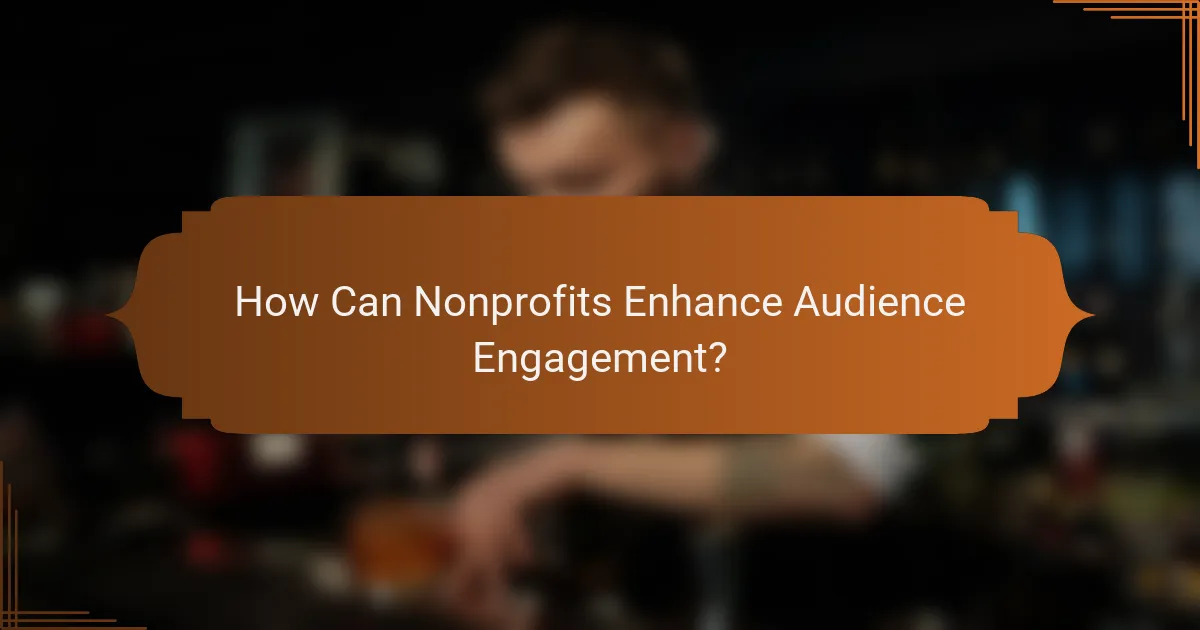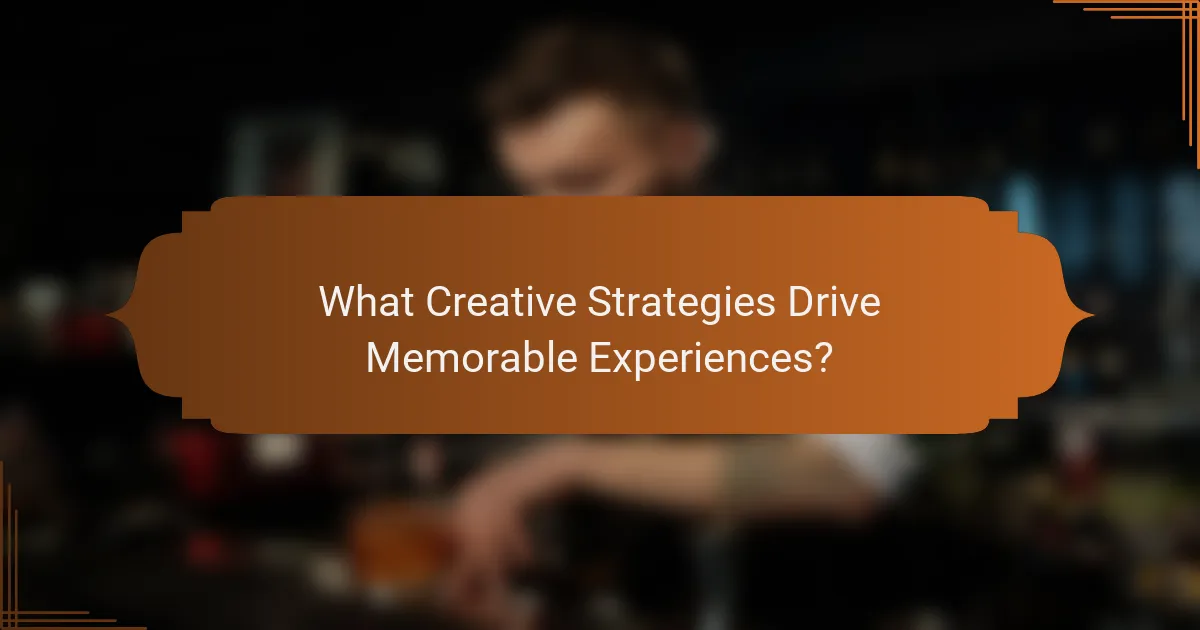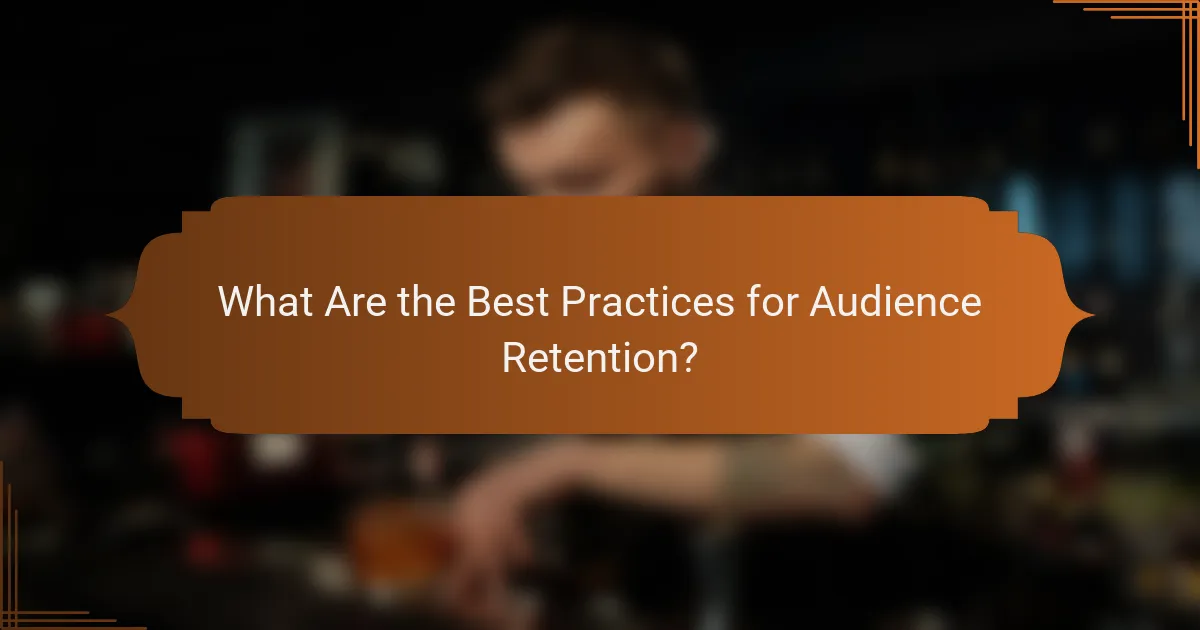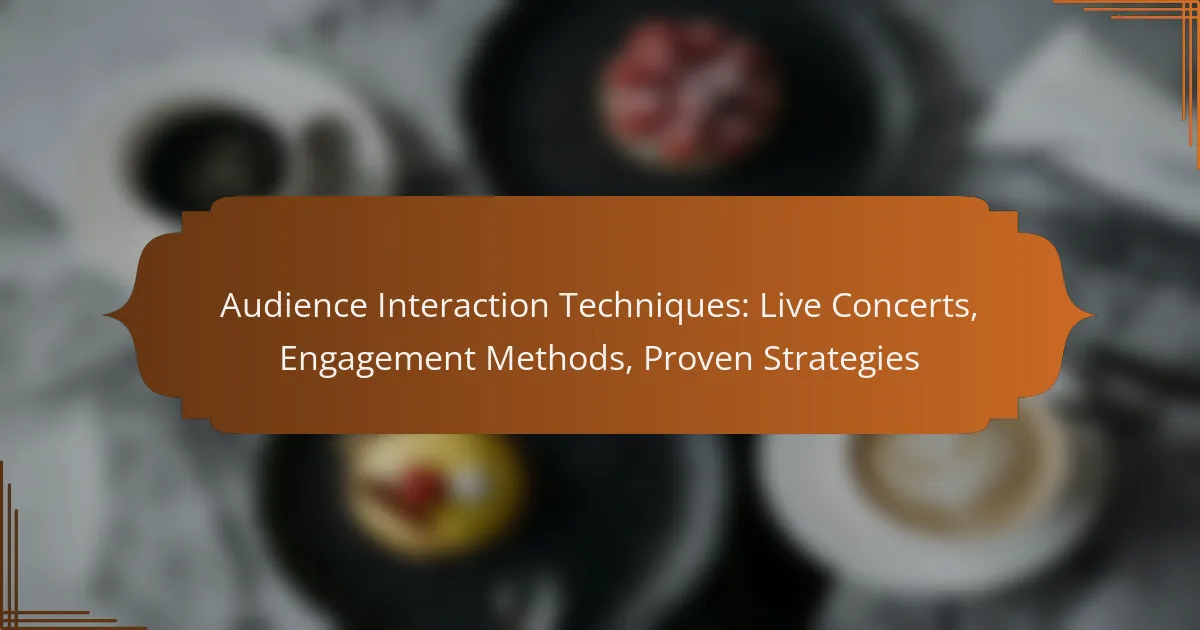Nonprofits can significantly boost audience engagement by crafting meaningful interactions that resonate with their supporters. By employing creative strategies and effective digital tools, organizations can create memorable experiences that deepen connections, enhance participation, and ultimately drive greater support for their causes.

How Can Nonprofits Enhance Audience Engagement?
Nonprofits can enhance audience engagement by creating meaningful interactions that resonate with their supporters. By implementing creative strategies, organizations can foster a deeper connection with their audience, leading to increased participation and support.
Interactive Events
Interactive events are a powerful way to engage audiences by allowing them to participate actively. These can include workshops, community fairs, or fundraising events that require audience involvement, such as live auctions or hands-on activities.
Consider hosting a charity run where participants can form teams and fundraise together. This not only raises money but also builds camaraderie and a sense of purpose among attendees.
Social Media Campaigns
Social media campaigns can significantly boost audience engagement by leveraging platforms like Facebook, Instagram, and Twitter. Creating shareable content, such as videos or infographics, encourages followers to interact and spread the word about your cause.
Utilize hashtags to create a sense of community and encourage user-generated content. For example, a campaign could invite supporters to share their stories related to your mission, enhancing visibility and connection.
Community Involvement
Community involvement is essential for nonprofits to build strong relationships with their audience. Engaging local businesses and residents in your initiatives can create a supportive network and foster loyalty.
Consider organizing clean-up days or food drives that invite community participation. This not only addresses local needs but also strengthens your organization’s presence and relevance in the area.
Storytelling Techniques
Storytelling is a compelling way to engage audiences emotionally. By sharing impactful stories about the people or communities your nonprofit serves, you can create a strong connection with supporters.
Use various formats such as videos, blog posts, or newsletters to tell these stories. Highlighting real-life experiences can motivate your audience to contribute, whether through donations or volunteer efforts.
Volunteer Recognition Programs
Recognizing volunteers is crucial for maintaining engagement and motivation. Implementing a volunteer recognition program can help show appreciation for their efforts and encourage continued participation.
Consider hosting an annual awards ceremony or providing small tokens of appreciation, such as personalized thank-you notes or gift cards. These gestures can enhance volunteer satisfaction and foster a loyal base of supporters.

What Creative Strategies Drive Memorable Experiences?
Creative strategies that drive memorable experiences for nonprofits often focus on engaging the audience through interactive and personalized approaches. These strategies not only enhance donor involvement but also foster a deeper connection to the cause.
Experiential Fundraising
Experiential fundraising involves creating immersive experiences that allow donors to engage directly with the mission of the nonprofit. This can include hands-on activities, workshops, or events that showcase the impact of donations. For instance, a wildlife conservation group might offer a behind-the-scenes tour of their facilities, allowing donors to see their contributions at work.
When planning experiential fundraising events, consider the interests of your audience and how they can actively participate. Aim for experiences that are both enjoyable and informative, ensuring that attendees leave with a strong emotional connection to your cause.
Unique Event Themes
Unique event themes can significantly enhance the appeal of fundraising activities by creating a memorable atmosphere. Consider themes that resonate with your mission, such as a masquerade ball for an arts organization or a community picnic for a local food bank. These themes can attract diverse audiences and encourage participation.
To implement a successful theme, ensure that all elements of the event—from decorations to activities—align with the chosen concept. This cohesive approach can elevate the overall experience and make it more engaging for attendees.
Personalized Donor Experiences
Personalized donor experiences focus on tailoring interactions to meet the preferences and interests of individual supporters. This can include customized thank-you notes, recognition at events, or exclusive updates on project progress. Such personalization helps donors feel valued and appreciated.
To create effective personalized experiences, gather information about your donors’ interests and past contributions. Use this data to inform your communications and engagement strategies, ensuring that each donor feels a unique connection to your organization’s work.

What Are Effective Digital Engagement Tools?
Effective digital engagement tools help nonprofits connect with their audience, streamline communication, and enhance participation in their initiatives. These tools can range from software for managing events to platforms for analyzing social media performance.
Event Management Software
Event management software simplifies the planning and execution of nonprofit events, allowing organizations to manage registrations, ticket sales, and attendee communication in one place. Popular options include platforms like Eventbrite and Cvent, which offer features such as customizable event pages and automated reminders.
When choosing event management software, consider factors like user-friendliness, integration with existing systems, and pricing models. Many platforms offer tiered pricing based on the number of attendees or features, so assess your needs carefully to avoid overspending.
Email Marketing Platforms
Email marketing platforms are essential for nonprofits to engage their supporters through newsletters, fundraising appeals, and event invitations. Tools like Mailchimp and Constant Contact provide templates and analytics to track open rates and engagement levels.
To maximize effectiveness, segment your email lists based on donor behavior or interests, and personalize your messages. Aim for a consistent sending schedule, but avoid overwhelming your audience with too many emails, which can lead to unsubscribes.
Social Media Analytics Tools
Social media analytics tools help nonprofits measure the impact of their online presence and engagement strategies. Tools like Hootsuite and Sprout Social allow organizations to track metrics such as follower growth, engagement rates, and post performance across various platforms.
Utilize these insights to refine your content strategy, focusing on what resonates with your audience. Regularly review analytics to adjust your approach, ensuring that your social media efforts align with your overall engagement goals.

How Do You Measure Engagement Success?
Measuring engagement success involves evaluating how effectively your nonprofit connects with its audience. Key indicators include participation rates, feedback quality, and overall impact on your mission.
Key Performance Indicators
Key Performance Indicators (KPIs) are essential metrics that help nonprofits assess engagement levels. Common KPIs include the number of event attendees, volunteer hours logged, and donations received. Tracking these indicators over time can reveal trends and areas for improvement.
For example, if your organization hosts an annual fundraiser, comparing attendance numbers year over year can indicate whether your engagement strategies are effective. Aim for a mix of quantitative and qualitative KPIs to get a comprehensive view.
Surveys and Feedback
Surveys and feedback mechanisms are vital tools for gauging audience engagement. Regularly soliciting input from your supporters can provide insights into their experiences and preferences. Consider using online surveys or feedback forms after events to gather immediate responses.
When crafting surveys, focus on clear, concise questions that encourage honest feedback. Aim for a response rate of around 20-30% for meaningful data. Use this information to adjust your strategies and enhance future engagement efforts.
Engagement Metrics
Engagement metrics provide a detailed view of how your audience interacts with your organization. These can include social media shares, email open rates, and website traffic. Monitoring these metrics helps you understand which channels resonate most with your supporters.
For instance, if your email campaigns have a low open rate, it may be time to revise your subject lines or segment your audience more effectively. Establish benchmarks for each metric to track progress and set realistic goals for improvement.

What Are the Best Practices for Audience Retention?
Effective audience retention for nonprofits hinges on building strong relationships and maintaining engagement. Key practices include consistent communication and offering exclusive content to keep your audience invested in your mission.
Consistent Communication
Maintaining regular communication with your audience is essential for retention. This can be achieved through newsletters, social media updates, and personalized emails that keep supporters informed about your nonprofit’s activities and impact.
Consider establishing a communication schedule, such as weekly or monthly updates, to create a reliable rhythm. Use engaging subject lines and compelling visuals to capture attention and encourage opens and reads.
Be mindful of your audience’s preferences; some may prefer email while others might engage more on social media. Tailor your approach based on feedback and engagement metrics to optimize your outreach.
Exclusive Content Offers
Providing exclusive content can significantly enhance audience retention. This could include behind-the-scenes looks at your organization, early access to events, or special reports on your impact. Such offerings make supporters feel valued and connected to your mission.
Consider creating a membership program or a donor appreciation club that offers unique content and experiences. For example, invite members to exclusive webinars or Q&A sessions with your leadership team.
Ensure that the exclusive content is genuinely valuable and relevant to your audience. Regularly assess what resonates with them and adjust your offerings accordingly to maintain interest and engagement.



